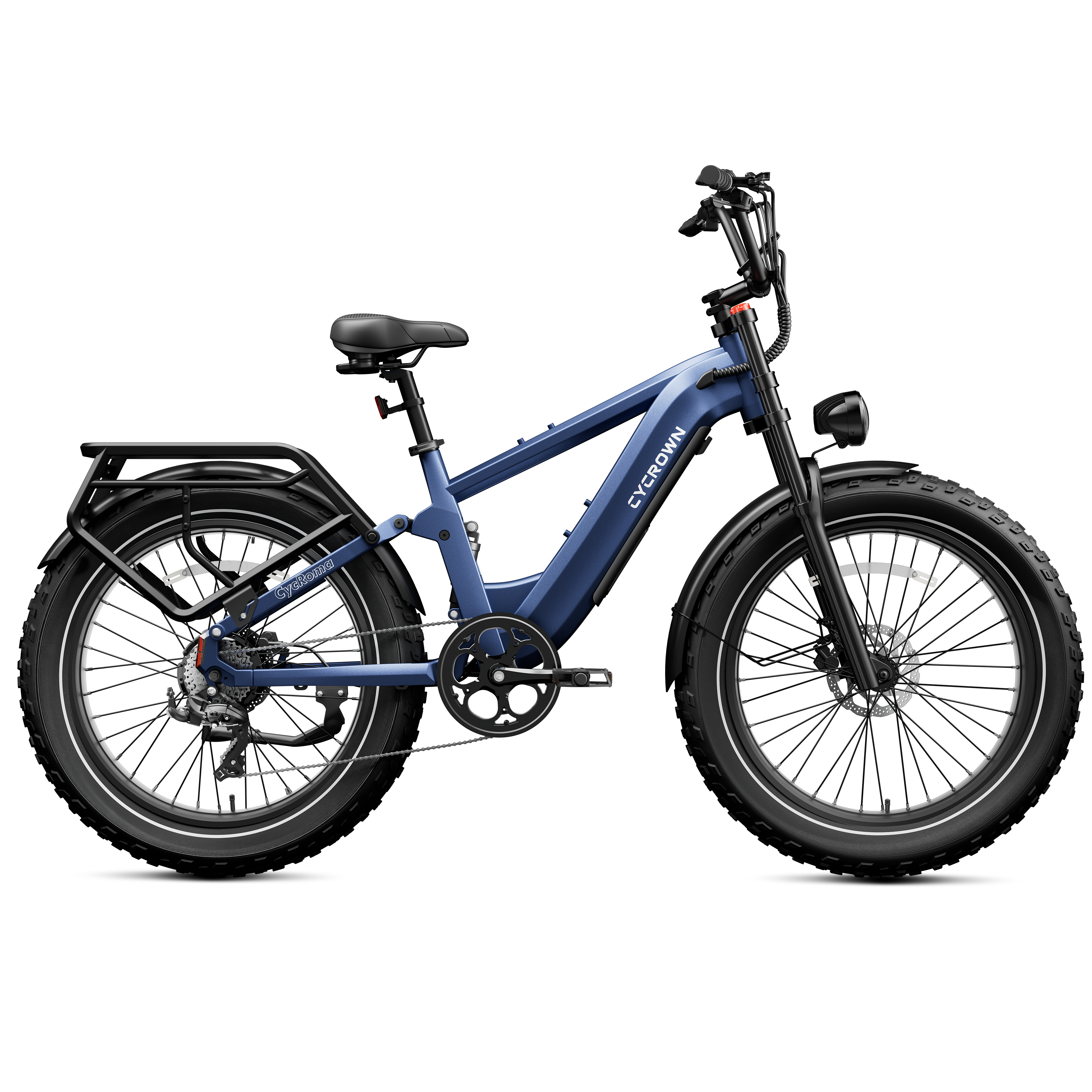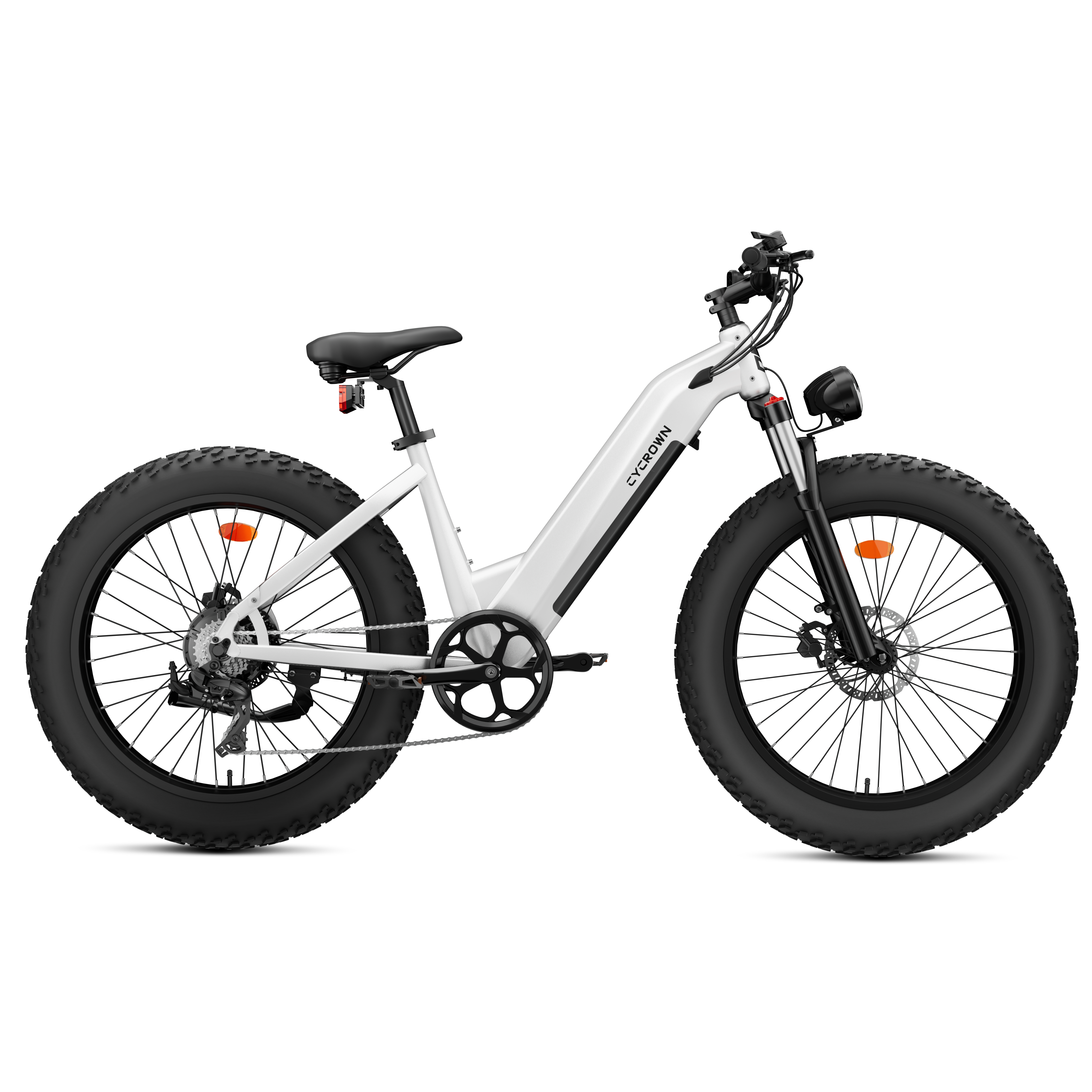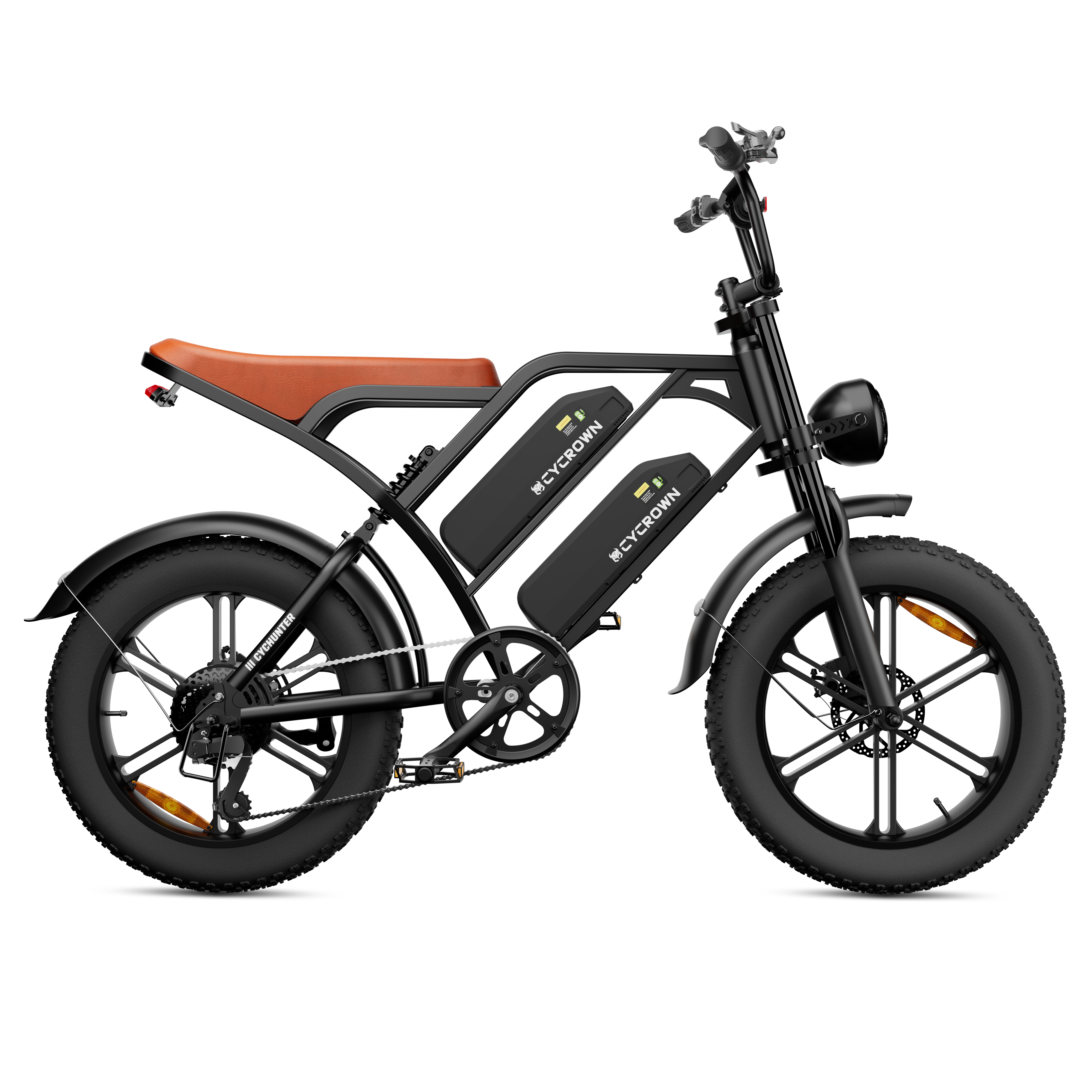Electric bikes have grown popular because they are convenient, eco-friendly, and make traveling long distances easier. They run on rechargeable batteries that you can charge using a power outlet. Many people wonder if electric bikes can charge while pedaling, especially through regenerative braking. This leads to the question: Do electric bikes charge when you pedal?
Regenerative braking is a technology that allows electric bikes to recover some of the energy lost during braking and use it to recharge the battery. The idea behind regenerative braking is that when you apply the brakes, the bike's hub or mid-drive system motor will convert the kinetic energy generated by the bike's motion into electrical energy, which is then stored in the battery.
In this article, we will explore whether electric bikes can charge while pedaling, the effectiveness of regenerative braking, and how it works. We will also discuss the prevalence of regenerative braking among electric bikes and whether it is a practical solution for charging the battery.
Basic Principles of Electric Bike Batteries

Electric bike batteries are an essential component of e-bikes, providing the power needed to operate the motor. These batteries are rechargeable and typically charged through external chargers. It is important to note that electric bikes do not generally charge when pedaling. Regenerative braking can generate some energy, but it is not commonly used.
Electric Bike Batteries
Electric bike batteries are designed to store energy, which is then used to power the motor. The capacity of the battery is measured in watt-hours (Wh) and determines how far the bike can go on a single charge. The higher the watt-hour rating, the longer the range of the bike.
To maximize the life of your electric bike battery, it is recommended to avoid fully charging and discharging the battery. Removing the battery from charging before it hits 100% and not letting it drop below 20% can help extend the battery life. Shorter charge cycles (discharging the battery by 25 to 75%) are ideal.
What is Regenerative Braking?

Regenerative braking is a technology that is commonly used in electric vehicles, including electric bikes. In essence, it is a method of converting kinetic energy back into battery power. This is achieved by using the electric motor on the bike to slow down the bike when the brakes are applied, rather than relying solely on the friction of the brake pads against the wheel.
When the brakes are applied, the electric motor on the bike acts as a generator, converting the kinetic energy of the moving bike into electrical energy, which is then stored in the battery for later use. This process is known as regenerative braking.
Do Electric Bikes Charge When You Pedal?
If you're wondering whether electric bikes can charge when you pedal, the answer is not a straightforward yes or no. While some e-bike models do have regenerative braking systems that can generate energy and charge the battery while you ride, not all e-bikes have this feature.
Regenerative braking is a technology that captures the energy lost during braking and converts it into electrical energy that can be stored in the battery. While it's more commonly used in electric cars, some e-bike manufacturers have started incorporating regenerative braking systems in their models.

However, even if your e-bike has a regenerative braking system, it's important to note that the amount of energy generated is relatively small compared to the energy required to power the e-bike. Therefore, regenerative braking alone is not enough to fully charge an e-bike battery.
Pro Tips:
Charging an e-bike battery while riding also creates resistance, which can make pedaling more difficult and reduce the range of the e-bike. As a result, most e-bike riders prefer to charge their batteries by connecting them to a power source when not in use.
The Efficiency of Regenerative Braking in E-Bikes
According to experts, the combined mass of a bike and rider is just too low to generate adequate kinetic energy when braking. This means that the amount of energy that can be captured from regenerative braking in e-bikes is relatively small. Some studies have shown that regenerative braking in e-bikes can only recover around 5-10% of the energy used during cycling.
Another issue is aero, where a significant amount of energy use is employed to overcome air resistance. This means that regenerative braking is most effective in heavier e-bikes or mountain e-bikes where there's a lot of potential energy to be captured from descents.
Advantages of Regenerative Braking

Regenerative braking has several advantages that make it a popular feature in many electric bikes.
One of the main advantages of regenerative braking is that it can extend the range of an electric bike. By recovering some of the energy that is lost during braking, regenerative braking can help to reduce the amount of energy that is drawn from the battery during normal operation. This means that an electric bike with regenerative braking can travel farther on a single charge than an electric bike without this technology.
Also check out our collection: Long Range E-Bikes and All-Terrain E-Bikes
Another advantage of regenerative braking is that it can improve the sustainability of an electric bike. By reducing the amount of energy that is drawn from the battery, regenerative braking can help to reduce the environmental impact of electric bikes. This is particularly important in areas where the electricity used to power electric bikes is generated from fossil fuels.
Regenerative braking is also more effective in certain scenarios. For example, it is most effective during long downhill sections where there is a lot of potential energy to be captured from descents. This is because the energy that is recovered during regenerative braking is proportional to the speed and weight of the electric bike. Therefore, regenerative braking is more effective in heavier electric bikes or electric bikes used in hilly areas.
Limitations of Regenerative Braking in E-Bikes
While regenerative braking is a promising technology for electric bikes, it has some limitations that prevent it from being widely implemented in e-bikes.
Here are some factors that limit the energy recovery efficiency of regenerative braking in e-bikes.
-
Cost: One of the major limitations of regenerative braking is the cost. The regenerative braking system involves complex components that increase the cost of the e-bike. This cost is then passed on to the customer, making it difficult for the average consumer to afford an e-bike with regenerative braking.
-
System Weight: Another limitation of regenerative braking is the system weight. The regenerative braking system adds weight to the e-bike, which can affect the overall performance of the bike. The additional weight can make the e-bike less agile and more difficult to maneuver, especially in tight spaces.
-
Limited Energy Recovery Efficiency: The energy recovery efficiency of regenerative braking is limited in e-bikes. The combined mass of the bike and the rider is too low to generate adequate kinetic energy when braking. Additionally, the energy used to overcome aerodynamic drag is significant, which reduces the amount of energy that can be recovered through regenerative braking.
Alternative Ways to Extend Battery Life
While regenerative braking is a great way to extend the battery life of your electric bike, there are other ways to do so without relying on it.
Here are some tips to help you maximize your e-bike battery life:
Proper Battery Maintenance
Taking care of your e-bike battery is crucial to ensure that it lasts for a long time. To extend its life, make sure you follow these tips:
- Store your battery in a cool, dry place when not in use.
- Avoid overcharging your battery. Always unplug it once it is fully charged.
- Charge your battery regularly, even if you are not using your e-bike. This will help prevent the battery from losing its charge capacity over time.
Optimized Riding Practices
How you ride your e-bike also affects its battery life. Here are some tips to help you optimize your riding practices:
- Use the pedal-assist mode instead of the throttle mode. This will help you save battery power.
- Avoid riding at high speeds. Riding at a steady pace will help you conserve battery power.
- Use your e-bike's gears wisely. Shift to a lower gear when going uphill and a higher gear when going downhill.
Regular Servicing
Regular servicing of your e-bike can also help extend its battery life. Here are some things you should do:
- Keep your e-bike clean and well-maintained.
- Check the tire pressure regularly. Underinflated tires can cause your e-bike's motor to work harder, which can drain the battery faster.
- Have your e-bike serviced by a professional at least once a year. They can check the battery's health and perform any necessary maintenance.
Conclusion
In summary, electric bikes do not charge when you pedal. While regenerative braking systems can generate some energy, it is not enough to significantly charge the battery. E-bikes are charged by connecting the battery to a power source.
It is important to keep in mind that charging while riding creates resistance and is not practical for most riders. Additionally, not all e-bikes have regenerative braking systems, so it is important to check the specifications of the bike you are interested in before purchasing.
While the technology for regenerative braking in e-bikes is improving, it is not yet at a point where it can significantly impact a typical rider's experience. Therefore, it is important to consider other factors such as battery capacity and range when purchasing or using an e-bike.
Frequently Asked Questions
Do electric bikes charge when going downhill?
No, electric bikes do not charge when going downhill. Although some electric bikes have a regenerative braking system that can recapture energy to extend the battery's charge slightly, this is not a common feature. Regenerative braking can generate some energy, but it is not commonly used. E-bikes are charged by connecting the battery to a power source.
How do electric bikes get charged?
Electric bikes are charged by plugging them into a power source. Most electric bikes come with a charger that can be plugged into a regular wall outlet. The charging time varies depending on the battery size and the charger's output. It is essential to follow the manufacturer's instructions for charging your electric bike to ensure the battery's longevity.
Do you have to pedal an electric bike constantly?
No, you do not have to constantly pedal an electric bike. Electric bikes have a motor that provides assistance when you pedal. The level of assistance can be adjusted, and some electric bikes also have a throttle that allows you to ride without pedaling at all. However, keep in mind that the battery's range will be affected by the level of assistance and the throttle usage.
Should I charge my eBike after every ride?
It is not necessary to charge your eBike after every ride, but it is recommended to keep the battery topped up. Lithium-ion batteries, which are commonly used in electric bikes, have a longer lifespan if they are kept between 20% and 80% charge. It is also essential to store your eBike in a cool, dry place and avoid leaving it in direct sunlight.
Does pedaling an eBike save battery?
Yes, pedaling an eBike can save battery. The motor on an electric bike provides assistance when you pedal, but it does not replace pedaling entirely. Pedaling an eBike requires less effort than a regular bike, so you can cover more distance with less fatigue. The level of assistance can be adjusted to conserve battery life, and some electric bikes also have a throttle that allows you to ride without pedaling at all.










